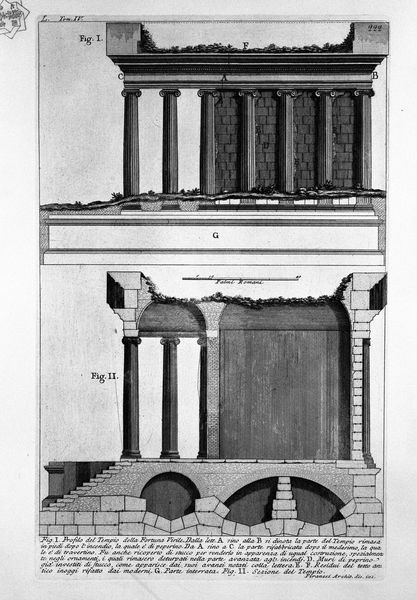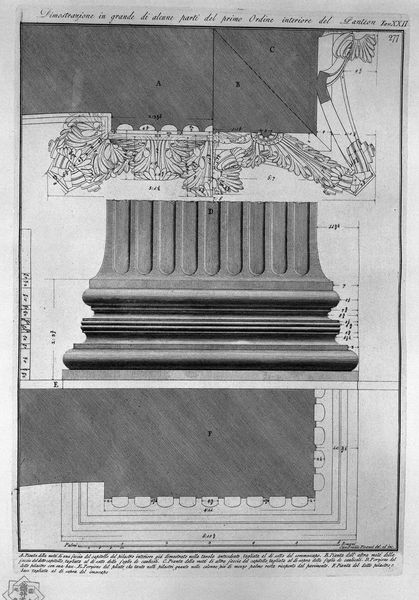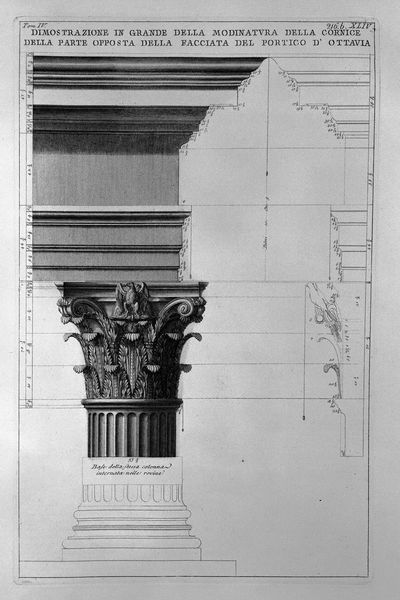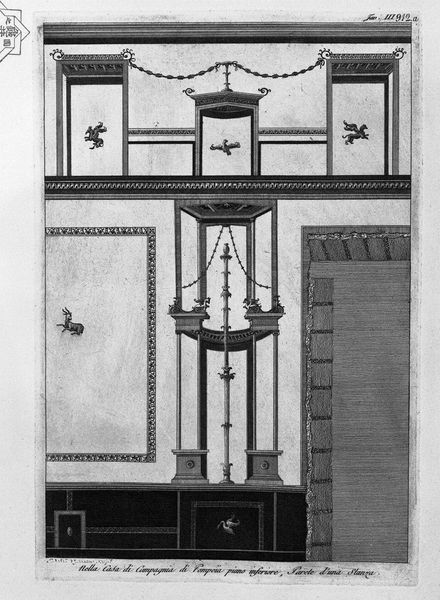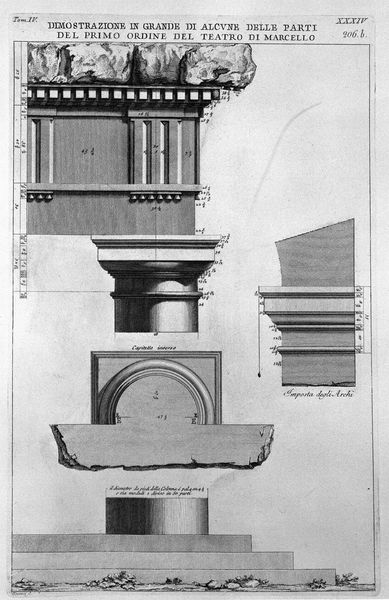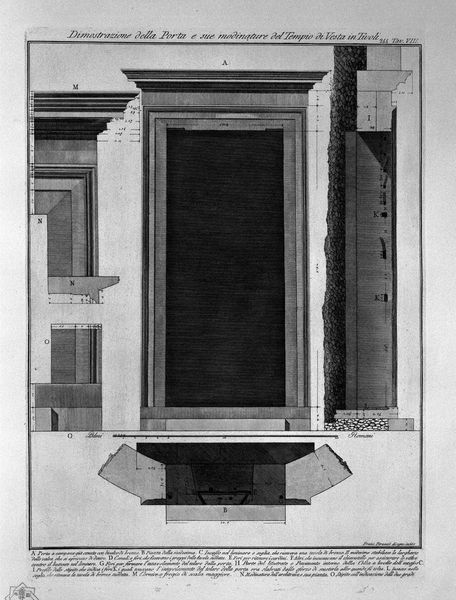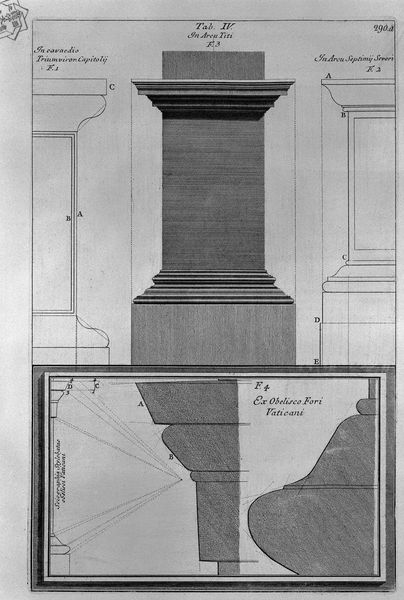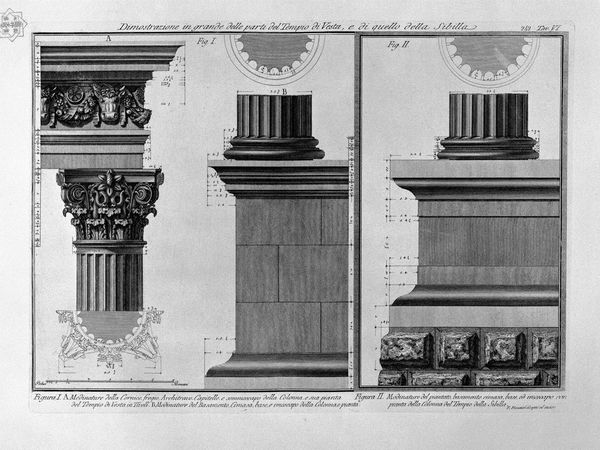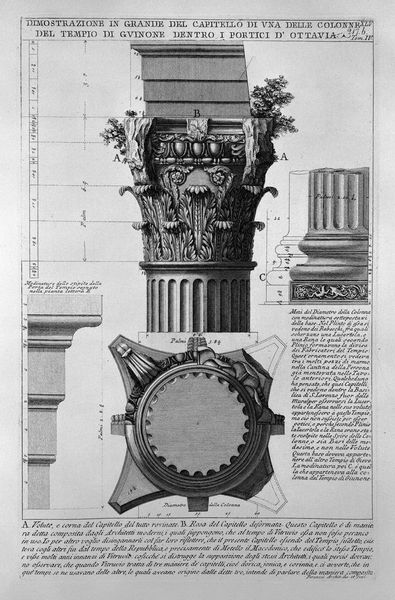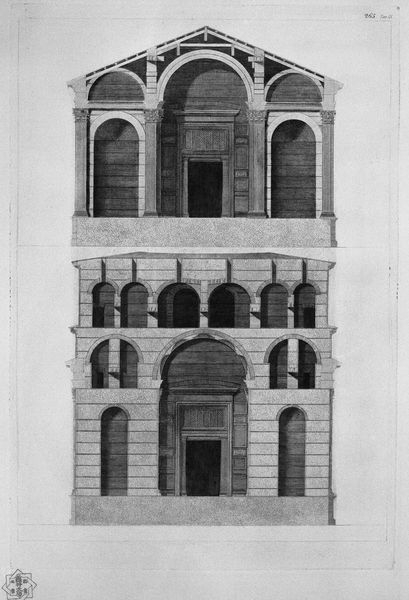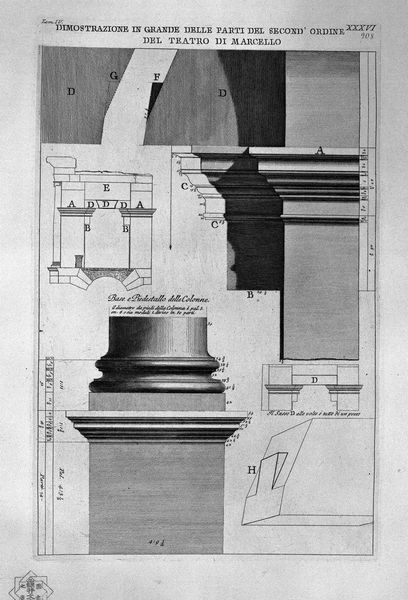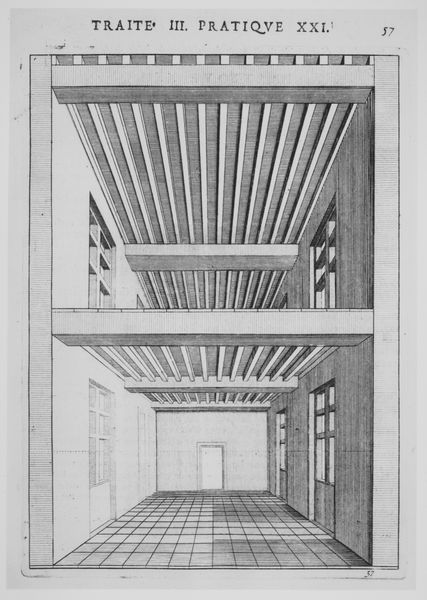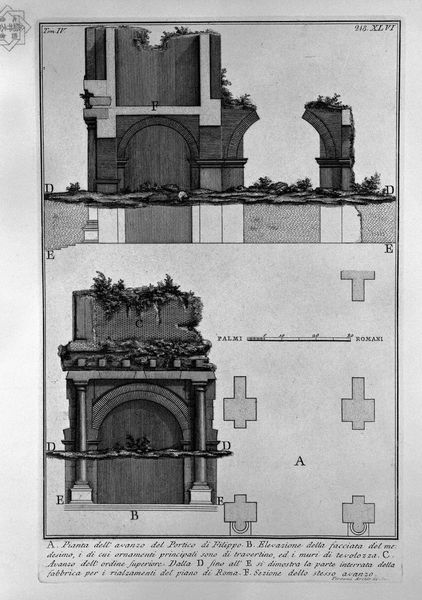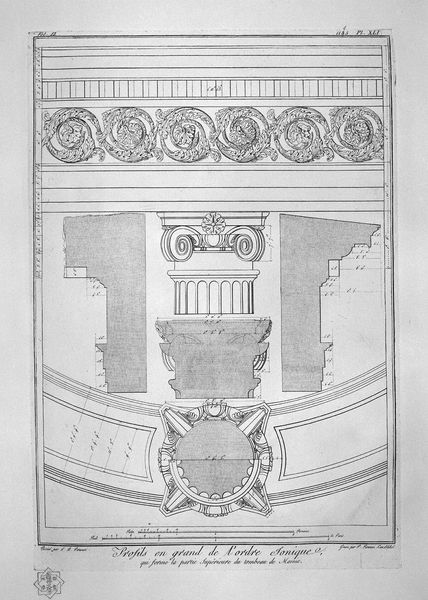
Demonstration in large parts of the first order interior of the Pantheon
0:00
0:00
drawing, engraving, architecture
#
pencil drawn
#
drawing
#
neoclacissism
#
pencil sketch
#
geometric
#
arch
#
history-painting
#
engraving
#
architecture
Copyright: Public domain
Curator: This print by Giovanni Battista Piranesi is titled "Demonstration in large parts of the first order interior of the Pantheon." Look closely; it seems to isolate specific architectural details from the inside of the famous Roman structure. Editor: Wow, it hits you right away, doesn’t it? Such stark beauty in isolating those elements. It's like uncovering secrets or looking at blueprints of a dream. The severe geometry practically vibrates with untold possibilities. Curator: Indeed. Note the clear distinction and arrangement of architectural features; observe the capital, shaft, and base elements depicted sequentially within a composition, all demonstrating Neoclassical principles. Editor: Those repeated arch shapes remind me of eyes. A series of silent observers that make you realize how massive and hollow, or human, the place is. It reminds me that structures are just organized pieces and parts from something more. Is that a correct read, structure-wise? Curator: Well, in semiotic terms, each arch functions as a signifier, representing stability and order inherent within the Pantheon's design; a key architectural motif repeated to emphasize symmetry. The visual repetition helps establish a clear hierarchy and structure within the engraving. Editor: Hierarchy! Yeah, but the eye follows each line and imagines where they came from, their creation… This rendering isn’t about completion or perfection, it is about the bits and the assembly, isn't it? That incompleteness becomes the narrative, and it kind of frees my imagination. Curator: While it may ignite the imagination, recognize Piranesi's meticulous method of detailing. By stripping these features from context, the image invites closer contemplation about the individual component that creates the whole; it accentuates form and structure. Editor: I can get behind that! It is about zooming in so one can think about zooming out, to try and think of something huge with more personality than perfection. Sort of beautifully broken and made again… Okay, I like it a lot! Curator: Yes, exactly. We began viewing an architectural breakdown that in turn broke open something deeper, as we’ve explored Piranesi's approach and its Neoclassical foundations.
Comments
No comments
Be the first to comment and join the conversation on the ultimate creative platform.
